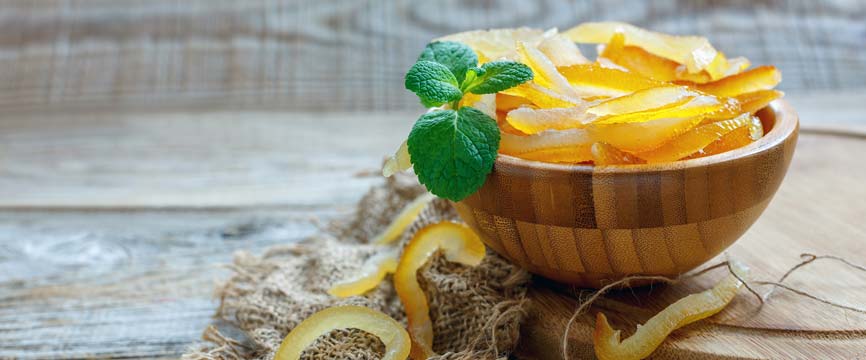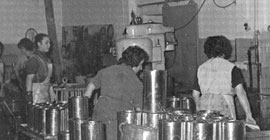
 The origin of candied fruits and fruit jam is very old, and as curious as the history of preserved food, dating back to the Paleolithic. Finding new ways to preserve food in order to avoid it being spoiled was a huge evolutionary step ahead for Mankind, as it allowed prehistoric men to survive in periods of scarcity and also to devote time to other activities apart from the mere search of fresh food.
The origin of candied fruits and fruit jam is very old, and as curious as the history of preserved food, dating back to the Paleolithic. Finding new ways to preserve food in order to avoid it being spoiled was a huge evolutionary step ahead for Mankind, as it allowed prehistoric men to survive in periods of scarcity and also to devote time to other activities apart from the mere search of fresh food.

But the pleasure of taking preserved fruit as we know it nowadays dates back to the Romans, who elaborated preserved fruit keeping it in honey, as sugar was yet unknown.
A culinary technique first used by ancient merchants
Although the date remains uncertain, it seems that ancient merchants were the first to make preserved fruit in order to obtain maximum profit of their stock. They grinded fruit and squeezed the juice from citrus fruit (oranges, limes and lemons), then boiled the mixture of pulp and juice and added sugar. After being boiled and sweetened, the fruit pectine was transformed into a viscose jelly-like paste that was spreadable. Thus, the first jams and jellies were born, and also the sugar as a food preservative. Indeed, sugar works as salt does: the adittion of any of them inhibits microbial growth and so food spoilage.
Influx of the arrival of sugar in the origin of candied fruits
The first written reference to sugar in the West comes from a lieutenant of Alejandro the Great , who locates its origins in India: “There is a type of cane from which honey is obtained without bees”, he comments graphically.
Sugar spreads throughout the world from Asia from the 7th century. Sugar cane, from which the “salt of India” (as it was known) was obtained, started to be cultivated in Egypt and North of Africa (first written references to cane sugar), and then it passed to the Iberian Peninsula in the 10th century.
But at that time, sugar is still considered as an exotic spice, like salt or pepper, that just improves the taste of some recipes.
The basic process in the origin of candied fruits dates back to the 14th century, when sugar starts to be known out of India. The process is based on keeping the whole fruits, its peels or even small cut pieces of it in a hot dense syrup that absorbs moisture from the fruit and is able to preserve it. It is an elaboration a little more sophisticated than the honey one of the Romans, but it complies with the same principle, the osmosis.
Other historical references we find in the origin of candied fruits point to 1561 as the date when marmalade (soon a culinary preparation for royalty) was born. And apparently it is in the 17th century when the first chutney travels from India to France and England.
It is not until the end of 18th century when it can be said that sugar is known almost everywhere. At the same time, the 18th century is key for the spread of consumption of candied fruits and fruit jam as culinary delicacies…
The French Revolution unleashes preserved fruit radical change
The changes settled by the French Revolution and the boost of modern society as we know it nowadays are behind the events that radically changed the propect of preserved food and, eventually, of preserved fruit and candied fruits. What was a mere technique of preservation based on dire straits, turned into luxury goods that the new wealthy medium class demand as culinary delicacies. French chefs started to preserve food in different ways with the aim of astonishing their clients in that modern society that was glimpsing.
The packaging methods of preserved fruit have accordingly evolved, but that will be the subject of another post in the near future…
Sources: Azucarera Española, Museu de la Confitura de Torrent, BC Food History










